#learningmodular
Explore tagged Tumblr posts
Text
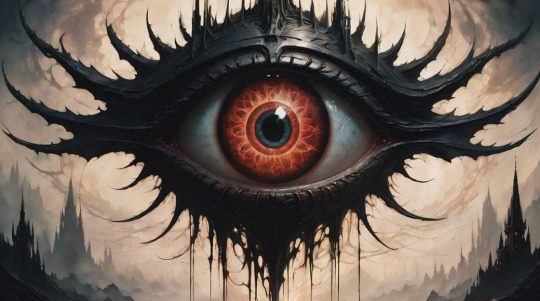
Part 8 of my series about the modules of Voltage Modular (and part 3 of the “F_Series”, a bundle of modules forged after the legendary DIY modular synth “Formant” - the 1977/78 Elektor project in Voltage Modular) is online now.
youtube
In this part I demonstrate and explain the central switching and gating module F_GENR8 and make it work in a couple of example patches.
Content/Timeline:
00:00 What is the module good for?
01:36 A quick introduction to all functions
02:54 The central clock´s function
04:54 Patch 1: the 8 regular gates and the 4 LFOs
09:33 The “F_modules” universe
10:15 Patch 2: the 4 logic gates and synchronizing events
18:17 The 4 random gates
20:51 Patch 3: random gates plus logic gates (and a funny mistake)
24:42 3 types of random gates
26:39 What´s left to mention
28:00 The End
#Elektor#ElektorFormant#FormantDIY#DIYsynth#ElektorDIYFormantsynth#ModularSynths#modularDIY#MusicCreation#ElectronicMusic#synthHistory#Synthesizers#MusicProduction#Synths#CreativeProcess#MusicTechnology#MusicInnovation#MusicEducation#MusicInspiration#SynthEnthusiast#MusicCommunity#Composer#MusicDiscovery#SynthPatches#SoundArt#MusicPassion#ModularSoundscapes#NewMusic#MusicExploration#MusicLearning#learningmodular
2 notes
·
View notes
Text

30)
How to build a generative multidimensional sonic space
Read it on 15th November on my website https://dev.rofilm-media.net
#multidimensional#dimensions#multidimensionalmusic#GenerativeMusic#ModularSynths#ElectronicMusic#MusicProduction#MusicCreativity#SoundDesign#MusicInspiration#MusicComposer#Synthesizer#MusicInnovation#CreativeExpression#MusicTheory#MusicEducation#SynthPatches#MusicalInspiration#MusicExploration#ElectronicArt#AudioAdventures#MusicMakers#learningmodular#vm#voltagemodular#cherryaudio
0 notes
Photo
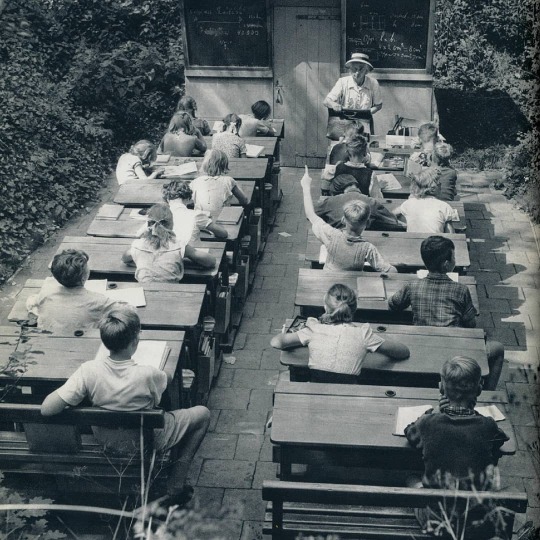
#learning #learningtolove #learningtocookthai #learningplay #learningbased #learninghowtodraw #learningmodular #learningmoment #learningmodel #learningpython #learningmode #learningthealphabet #learningthroughplaying #learningtolearn #learningyourcraft #learningfocus #learningtoeat #learningmore #learningmaterials #learningtheproduct #learningwithphoonhuat #learningdaily #learningwithmusic #learningskills #learningonmamaslap #learninganimalsname #learningthestockmarket #learningtosurfisabigdealtome #learningfrommykid #learningspanish https://www.instagram.com/p/CAAo3AMgXRG/?igshid=1dinns2v4wute
#learning#learningtolove#learningtocookthai#learningplay#learningbased#learninghowtodraw#learningmodular#learningmoment#learningmodel#learningpython#learningmode#learningthealphabet#learningthroughplaying#learningtolearn#learningyourcraft#learningfocus#learningtoeat#learningmore#learningmaterials#learningtheproduct#learningwithphoonhuat#learningdaily#learningwithmusic#learningskills#learningonmamaslap#learninganimalsname#learningthestockmarket#learningtosurfisabigdealtome#learningfrommykid#learningspanish
0 notes
Photo

Thank you so much Mariannah, Frank, Alison, Emma and everyone at Currents 826 on Canyon Road in Santa Fe, for putting on such a lovely event! It was a pleasure to perform with Jim Coker of @five12inc , @alias_zone aka @learningmodular , @anthonyballo and @mandofink As we layered our music with the visual art displayed throughout the gallery. #currents826 #santafe #newmexico #visualart #soundartist #liveperformances #liveartist #composers #visual #ambient #soundscape #experimentalmusic #atmospheric #soundsculpture #trovarsiofficial (at Currents 826) https://www.instagram.com/p/CaxgFVevhNi/?utm_medium=tumblr
#currents826#santafe#newmexico#visualart#soundartist#liveperformances#liveartist#composers#visual#ambient#soundscape#experimentalmusic#atmospheric#soundsculpture#trovarsiofficial
0 notes
Photo

#recordingstudio #music #copenhagen #artist #rnb #designers #vietnamese #artists #soundstudio #pop #danish #synth #superbooth #musicstore #muffwiggler #modular #eurorackmodular #djlife #musik #bookdesign #analogsynth #lucashoang #vinylstore #suzanneciani #newproducts #musicproduction #moog #learningmodular #eurorack #recording #producer @yamaha_proaudio_official @yamahans10 @nona_recording_studio @_homestudios_ @aalborg_kommune @platform_4 @aalborgproduktionsskole @umf.2019 #urbansoundcollective #maxmartin #universalaudioapollo #yamahans10 #yamahans10mm #aalborgmusikfestival #aalborgmusikhus #aalborgmusik #musician #guitarplayer #producerlife (at Aalborg, Denmark) https://www.instagram.com/p/B1BArERgySQ/?igshid=1lram57j7r5x5
#recordingstudio#music#copenhagen#artist#rnb#designers#vietnamese#artists#soundstudio#pop#danish#synth#superbooth#musicstore#muffwiggler#modular#eurorackmodular#djlife#musik#bookdesign#analogsynth#lucashoang#vinylstore#suzanneciani#newproducts#musicproduction#moog#learningmodular#eurorack#recording
0 notes
Photo
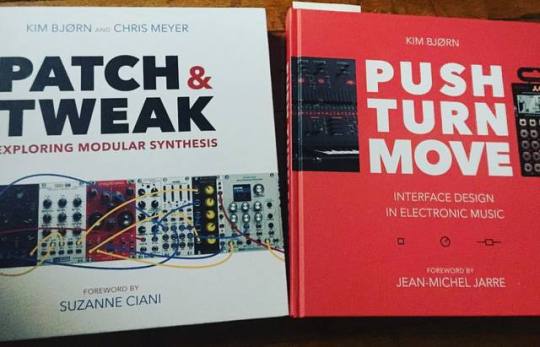
Meanwhile... exploring modular synthesis & interface design 🎶🍄 @kim_bjorn @moogfest @learningmodular #synthesizelove #biosonification #nonhuman #collaboration (at Junction Triangle) https://www.instagram.com/p/Bw92lCfAhLo/?igshid=6mx9n36ksrb6
0 notes
Text
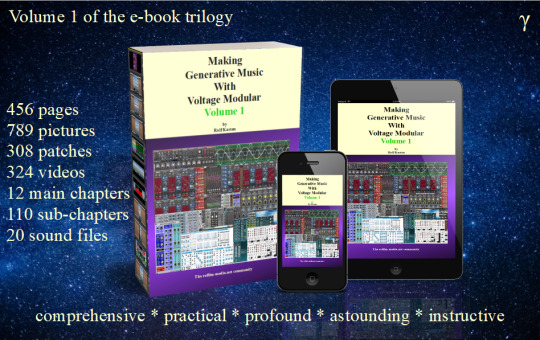
γ
What are the ingredients for generative music, and how do the “kitchen tools” work, the tools I process these ingredients with?
#GenerativeMusic#ModularSynths#ElectronicMusic#MusicProduction#MusicCreativity#SoundDesign#MusicInspiration#MusicComposer#Synthesizer#MusicInnovation#CreativeExpression#MusicArtists#MusicTheory#MusicEducation#MusicCommunity#MusicPassion#MusicJourney#SynthPatches#AudioExperimentation#MusicalInspiration#MusicExploration#ElectronicArt#AudioAdventures#MusicalDiscovery#MusicMakers#SoundExploration#learningmodular#vcv#vcvrack#vcvrack2
2 notes
·
View notes
Text
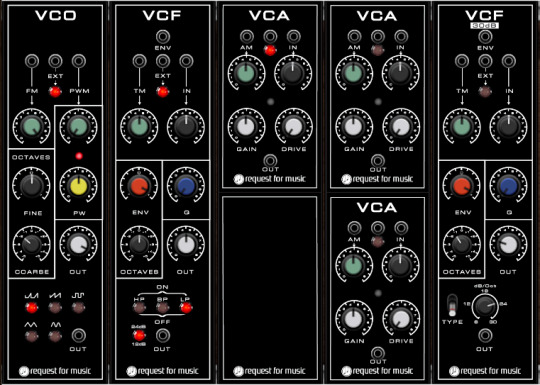
Part 1 of my series about the “F_Series”, a bundle of modules forged after the legendary DIY modular synth “Formant” (the 1977/78 Elektor project) in Voltage Modular is online now:
youtube
Content/Timeline:
00:00 Intro
01:18 A Short History of Modular Synths
06:10 The Original Vintage Modules
06:41 The VCO and its Wave Shapes
11:27 The 3 VCFs
18:56 The LFOs
21:56 The VCA
26:10 The ADSR and the COM Module
26:26 The Noise and Sample And Hold Module
#Elektor#ElektorFormant#FormantDIY#DIYsynth#ElektorDIYFormantsynth#ModularSynths#modularDIY#MusicCreation#ElectronicMusic#synthHistory#Synthesizers#MusicProduction#Synths#CreativeProcess#MusicTechnology#MusicInnovation#MusicEducation#MusicInspiration#SynthEnthusiast#MusicCommunity#Composer#MusicDiscovery#SynthPatches#SoundArt#MusicPassion#ModularSoundscapes#NewMusic#MusicExploration#MusicLearning#learningmodular
2 notes
·
View notes
Text
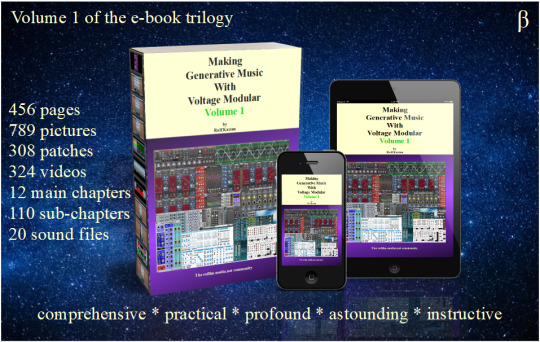
β
What role does chance play in generative music, and are there different types of chance, and if so, how do I generate them with modular synthesizers?
#GenerativeMusic#ModularSynths#MusicCreation#ElectronicMusic#Synthesizers#MusicProduction#Synths#CreativeProcess#MusicTechnology#MusicInnovation#MusicEducation#MusicInspiration#SynthEnthusiast#Composer#SynthPatches#SoundArt#ModularSoundscapes#MusicExploration#MusicLearning#learningmodular#VM#VoltageModular#Playertron#RM_Ware#Weevil#musicandsociety#musicandbiology#musicandphysics#cherryaudio#learningGenerativeMusic
2 notes
·
View notes
Text

The last days before publishing a new book are always rather exciting for me. Have I thought of everything? have I really finished all tasks? etc.
The generative music modular bible. Enjoy your day! Rolf
#music#sound#musicproduction#sounddesigner#generative#generativemusic#modular#modularsynthesizers#learningmodular#synthesizerpatches#synthesizermusic#modularmusic#modularSynths#MusicInnovation#VCV#VCVCRACK#vcvrack2#hardwaresynths
2 notes
·
View notes
Text

Twist Knobs, NotMinds.
https://www.dev.rofilm-media.net/node/685
#musicproduction#music#sounddesign#sound#modularsynths#learningmodular#electronicmusic#synthpatches#musiceducation#Synths#Synthesizer#gears
0 notes
Text

Eurorack vs. Semi-Modular Synths – a comprehensive series of articles:
#music #modularsynths #eurorack #semimodular
#music#modularsynths#eurorack#semimodular#musicproduction#electronicmusic#sounddesign#learningmodular#synthpatches
0 notes
Text

Not only ambient music, granular sound design, generative music, hardware synths, software synths, modular synths, sequencers, music production etc.
But take also some goodies away from https://lnkd.in/dUexGWy #music #synthesizer #sounddesign #musicproduction
#musicproduction#music#sounddesign#electronicmusic#modularsynths#generativemusic#synthpatches#learningmodular#granular synthesis#synthesizer
0 notes
Text

Ambient music, granular sound design, generative music, hardware synths, software synths, modular synths, sequencers, music production etc.
#music #synthesizer #sounddesign #musicproduction
#music#musicproduction#electronicmusic#sounddesign#modularsynths#musiceducation#learningmodular#generativemusic#synthpatches
0 notes
Text

Forget your cellphone! Go to your PC and visit https://dev.rofilm-media.net
and get 4 e-books with legions of additional material about professionally producing music for the price of 1. The link is also in my bio. Only on PC. Cheers, Rolf
#GenerativeMusic#ModularSynths#ElectronicMusic#MusicProduction#SoundDesign#MusicComposer#Synthesizer#Creativity#Artists#SynthPatches#ElectronicArt#AudioAdventures#MusicalDiscovery#MusicMakers#learningmodular#vcv#vcvrack#vcvrack2#vm#voltagemodular#cherryaudio#granularsynthesis#music#sonic#granular#grains#newconcepts#ambient#ambientmusic#newambient
0 notes
Text
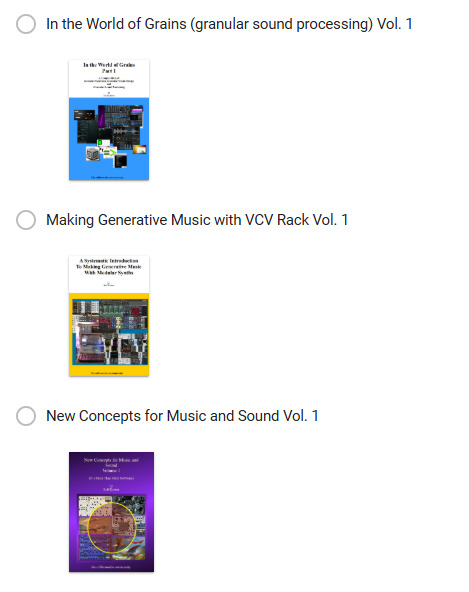
Get one of these comprehensive E-books incl. legions of patches and videos FOR FREE: https://dev.rofilm-media.net
#GenerativeMusic#ModularSynths#ElectronicMusic#MusicProduction#MusicCreativity#SoundDesign#MusicInspiration#MusicComposer#Synthesizer#MusicInnovation#CreativeExpression#MusicTheory#MusicEducation#SynthPatches#MusicalInspiration#MusicExploration#ElectronicArt#AudioAdventures#MusicMakers#learningmodular#vm#voltagemodular#cherryaudio#generativemusic#makinggenerativemusic
0 notes